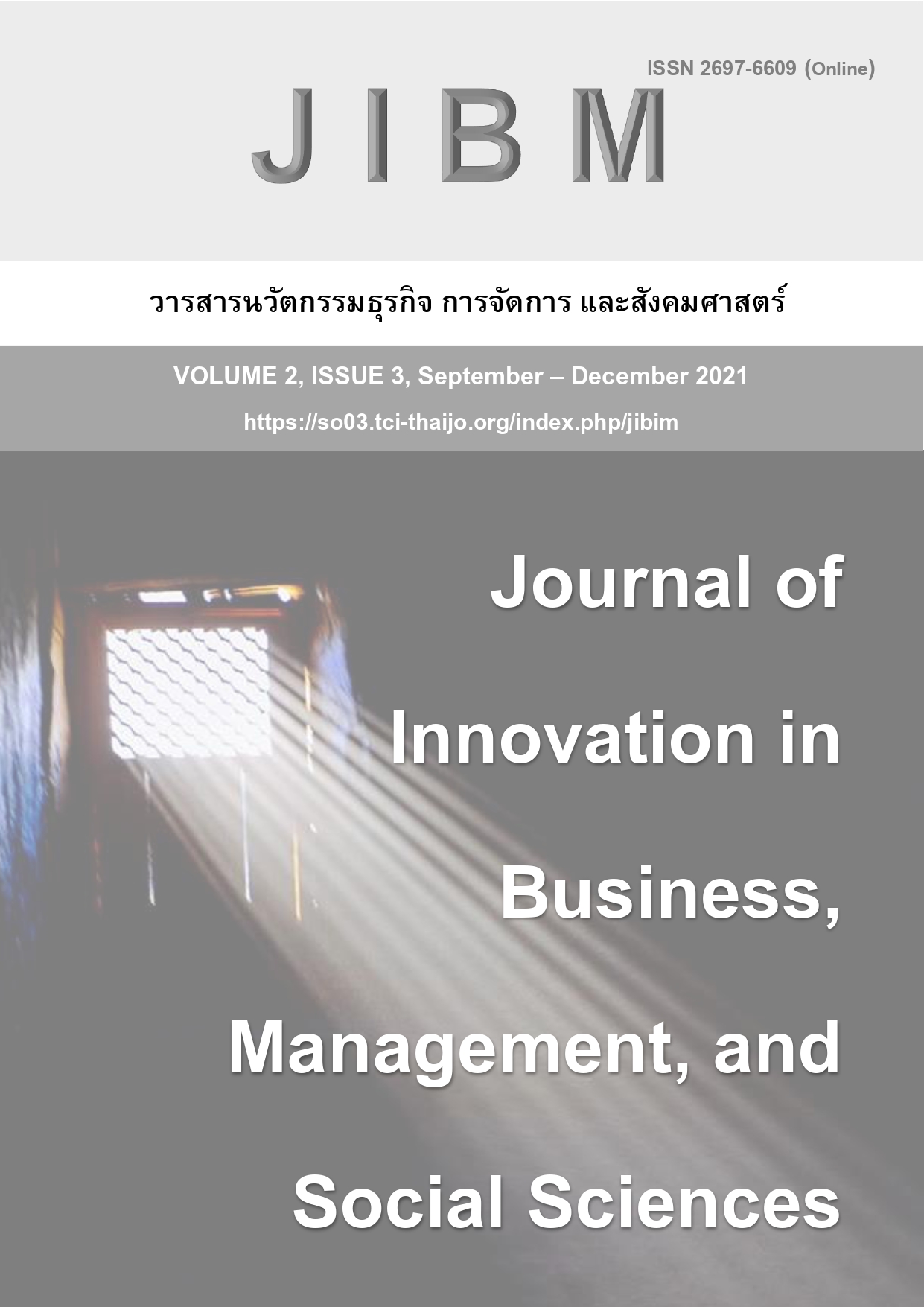การคาดการณ์ผลตอบแทนในอนาคตของตราสารทุนหุ้นสามัญโดยการใช้ระบบ คอมพิวเตอร์เรียนรู้ได้ด้วยตนเอง
คำสำคัญ:
ระบบคอมพิวเตอร์เรียนรู้ได้ด้วยตอนเอง, ตราสารทุน, ผลตอบแทนบทคัดย่อ
งานวิจัยนี้มีวัตถุประสงค์เพื่อประเมินความสามารถพยากรณ์ของแบบจำลองคอมพิวเตอร์เรียนรู้ได้ด้วยตอนเองต่อผลตอบแทนของตราสารทุน โดยใช้ข้อมูลราคารายวันของตราสารทุนในตลาดหลักทรัพย์แห่งประเทศไทย ข้อมูลในงบการเงิน ข้อมูลอัตราส่วนทางการเงิน ข้อมูลปัจจัยทางเทคนิคข้อมูลเศรษฐศาสตร์มหภาค อัตราแลกเปลี่ยน ดัชนีหลักทรัพย์ และดัชนีทองคำ ข้อมูลช่วง 2009 -2021 ผลการศึกษาแสดงการพยากรณ์ผลตอบแทนด้วยแบบจำลองคอมพิวเตอร์เรียนรู้ได้ด้วยตอนเองคาดการณ์ผลตอบแทน ด้วยแบบจำลองที่มีความแม่นยำที่สุดก็คือแบบจำลอง Random Forest ซึ่งมีค่าความผิดพลาดต่ำที่สุดในทุกช่วงของการคาดการ์ผลตอบแทน (ราย 1 วัน 1 เดือน และ 3 เดือน)
เอกสารอ้างอิง
Banerjee, A. (2019). Predicting Stock Return of UAE Listed Companies Using Financial Ratios. Accounting and Finance Research, 8(2). doi:https://doi.org/10.5430/afr.v8n2p214
Basak, S., Kar, S., Saha, S., Khaidem, L., & Dey, S. R. (2019). Predicting the direction of stock market prices using tree-based classifiers. North American Journal of Economics and Finance, 47(47), 552–567. doi:https://doi.org/10.1016/j.najef.2018.06.013
Jaroenkitwatcharachai, K. (2018). Artificial intelligence for forecasting wage. (Master degree Individual Study). Thammasat University,
javatpoint. What is Artificial Neural Network. Artificial Neural Network Tutorial. Retrieved from https://www.javatpoint.com/artificial-neural-network
Jiemwiriyakul, B., Sirianuntapiboon, P., & Lorsubkong, P. (2019). Portfolio Return Prediction using Neural Network. (Master degree Individual Study). Mahidol University
Jozefowicz, R., Zaremba, W., & Sutskever, I. (2015). An Empirical Exploration of Recurrent Network Architectures. Paper presented at the Proceedings of the 32nd International Conference on Machine Learning, Proceedings of Machine Learning Research. https://proceedings.mlr.press/v37/jozefowicz15.html
Kim, K.-j. (2003). Financial time series forecasting using support vector machines. Neurocomputing, 55(1), 307–319. doi:https://doi.org/10.1016/S0925-2312(03)00372-2
Ma, Y., Han, R., & Wang, W. (2021). Portfolio optimization with return prediction using deep learning and machine learning. Expert Systems with Applications, 165, 1-15. doi:https://doi.org/10.1016/j.eswa.2020.113973
Nevasalmi, L. (2020). Forecasting multinomial stock returns using machine learning methods. Journal of Finance and Data Science, 6(1), 86-106. doi:https://doi.org/10.1016/j.jfds.2020.09.001
Olah, C. (2015). Understanding LSTM Networks. Retrieved from http://colah.github.io/posts/2015-08-Understanding-LSTMs/
Patel, J., Shah, S., Thakkar, P., & Kotecha, K. (2015). Predicting stock market index using fusion of machine learning techniques. Expert Systems with Applications, 42(4), 2162-2172. doi:https://doi.org/10.1016/j.eswa.2014.10.031
Srivastava, R. K., Koutník, J., Steunebrink, B. R., & Schmidhuber, J. (2017). LSTM: A Search Space Odyssey. IEEE Transactions on Neural Networks and Learning Systems, 28(10), 2222-2232. doi:https://doi.org/10.1109/TNNLS.2016.2582924



